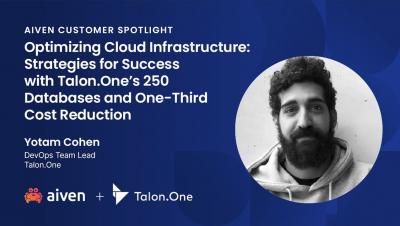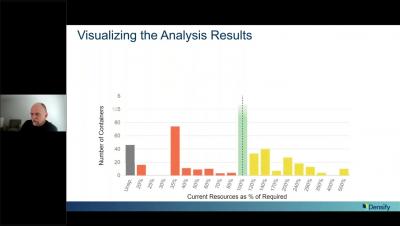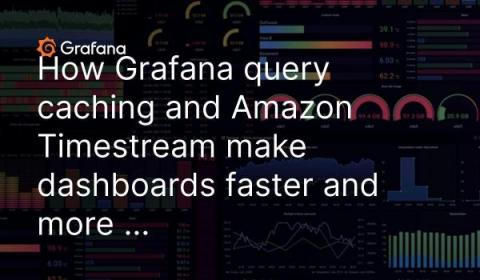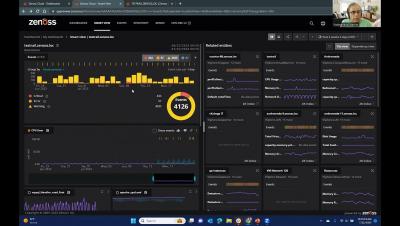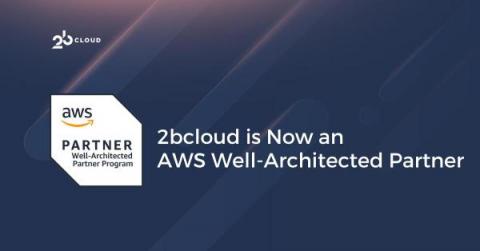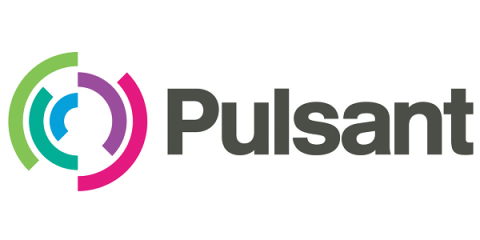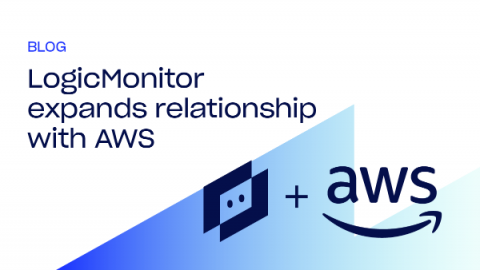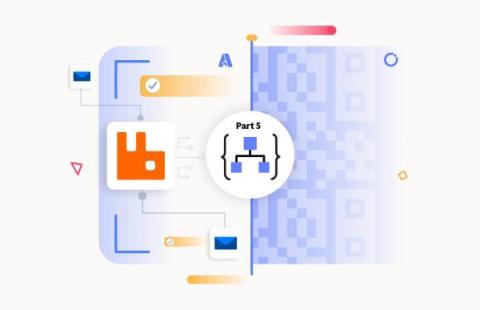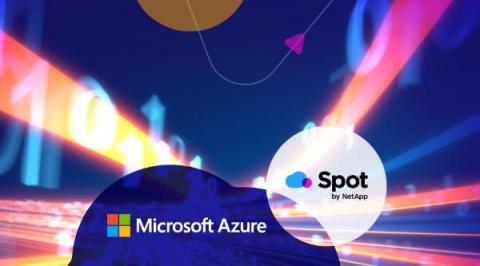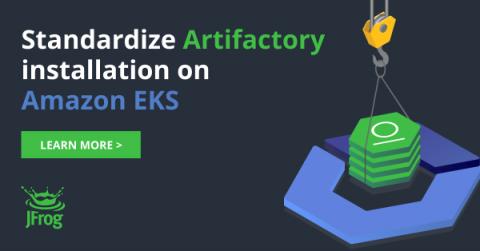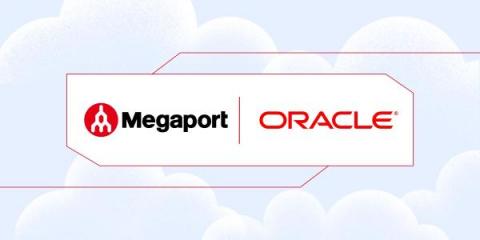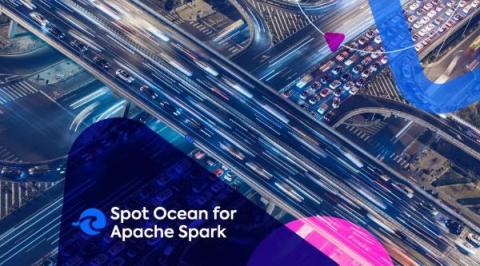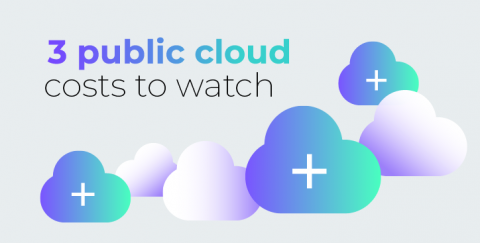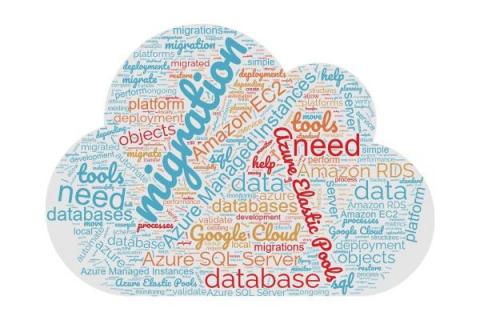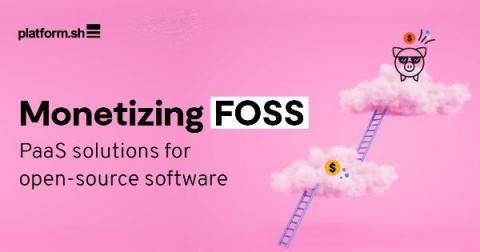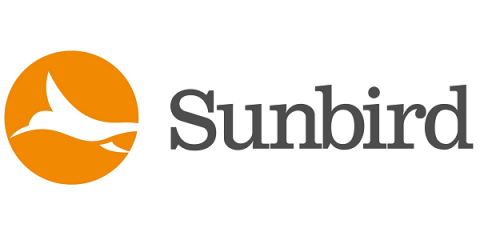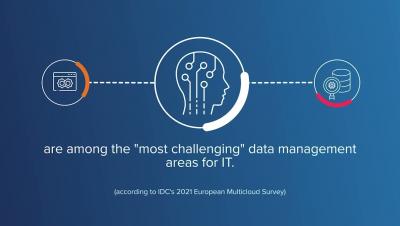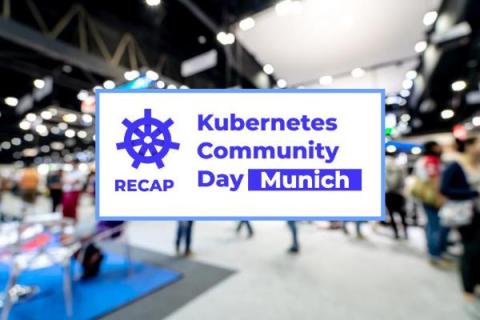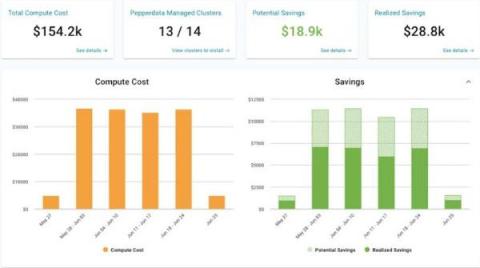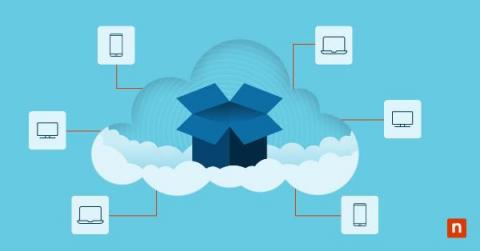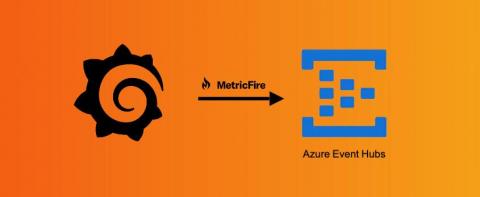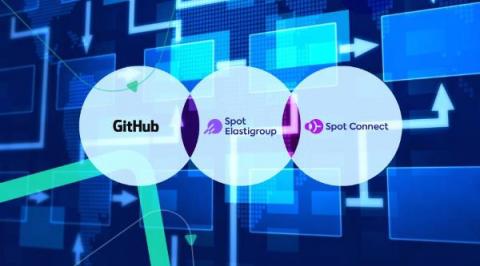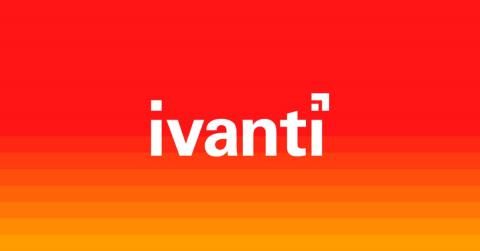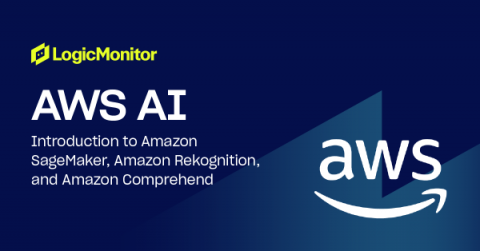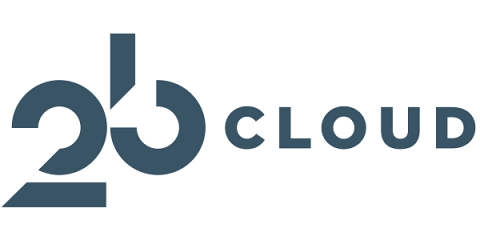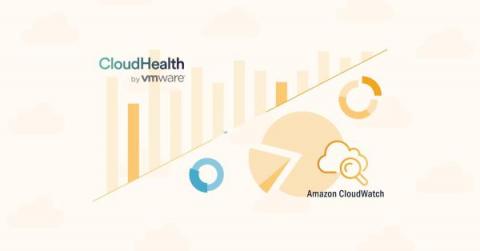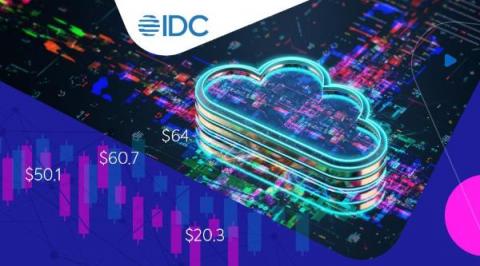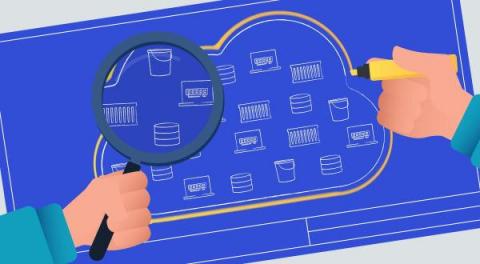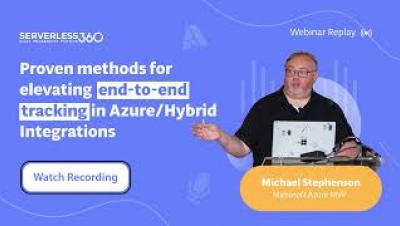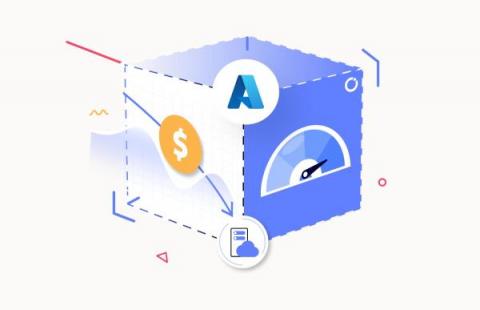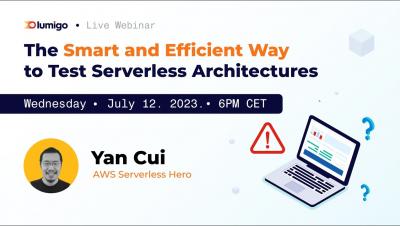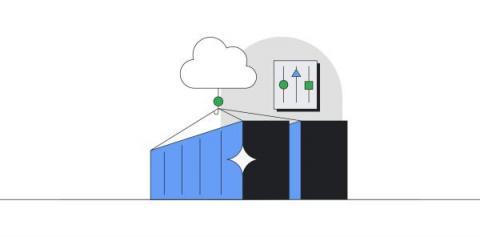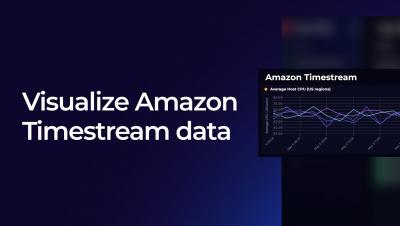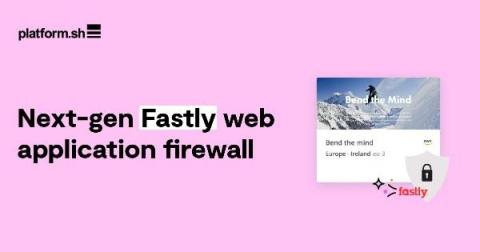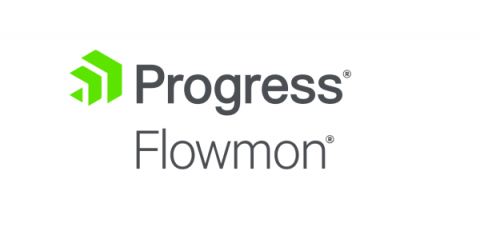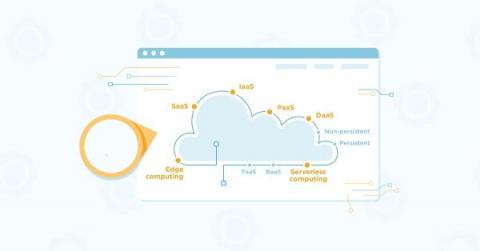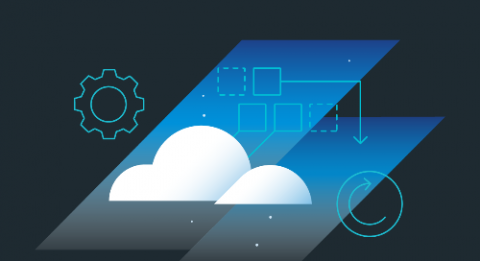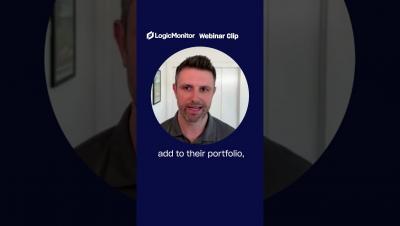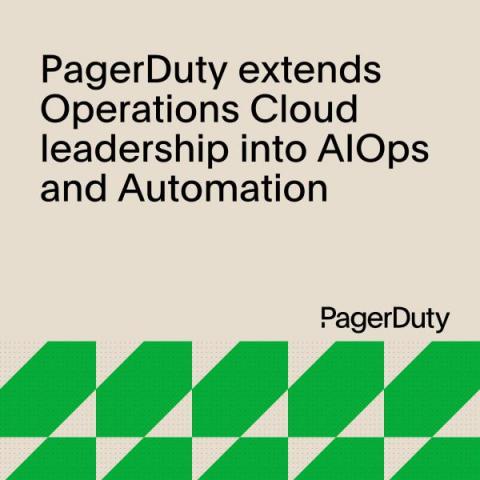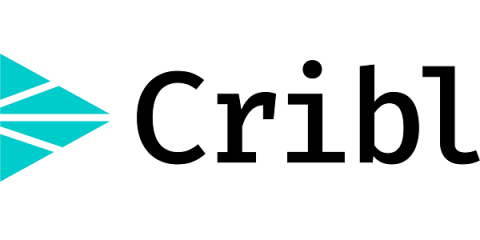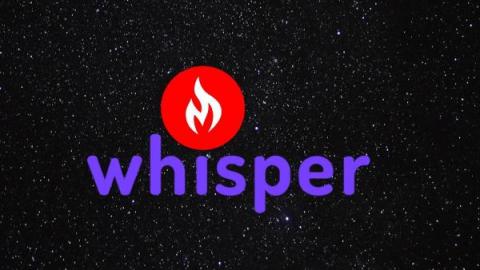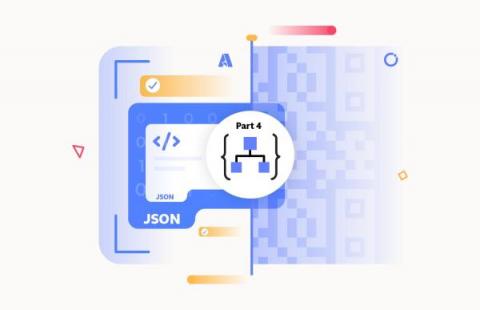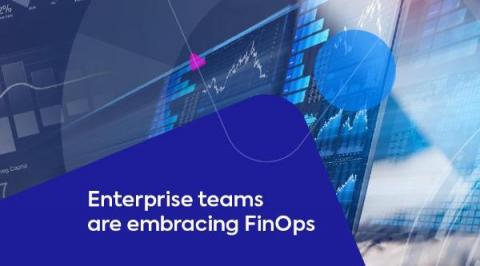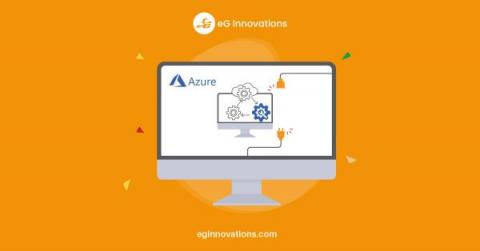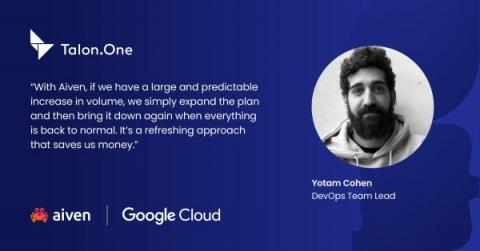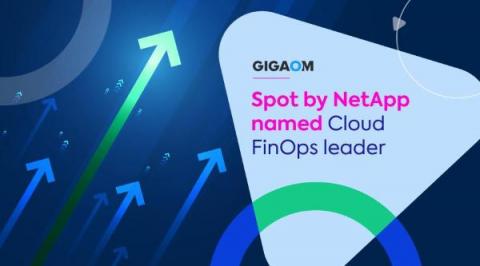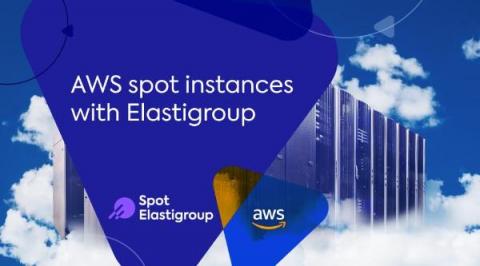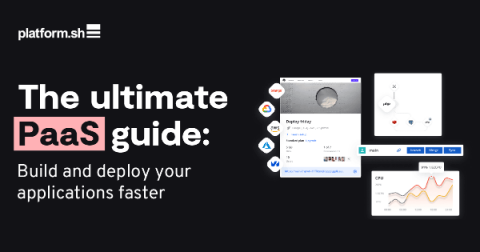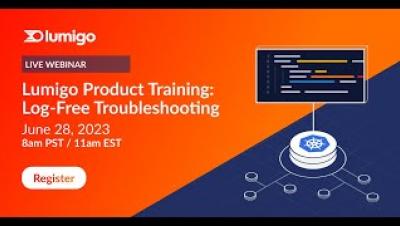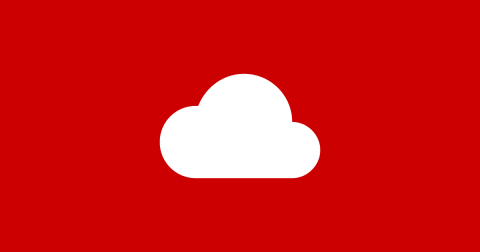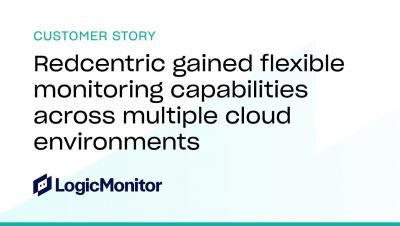Operations | Monitoring | ITSM | DevOps | Cloud
July 2023
Azure Blob Storage Malware Scanning soon to be GA
On September 1, 2023, Microsoft’s Defender for Azure Blob Storage is set to introduce a groundbreaking feature: Malware Scanning. This highly-anticipated addition to the Defender suite brings real-time protection against malicious content, making it a vital component in fortifying your data security and safeguarding against the ever-evolving threat landscape.
What Are Cloud Centers of Excellence (CCoE), and Should You Have One?
Today, the cloud impacts all departments of the organization, not just the IT crew. Here’s how cloud centers of excellence drive cloud success.
Optimizing Cloud Infrastructure: Talon.One's 250 Databases and One-Third Cost Reduction
4 Ways SaaS Brands Evolved Their Pricing Strategy Using Cost Intelligence
Serverless360 - Best Azure Cloud Management Tool
We Let Our Developers Choose Their Own K8S Requests and Limits and This Happened!
How Grafana query caching and Amazon Timestream make dashboards faster and more cost-effective
This blog post was co-authored by Igor Shvartser, Senior Technical Product Manager at Amazon Timestream, and Michael Mandrus, Senior Software Engineer at Grafana Labs. Grafana Labs Senior Software Engineers Stephanie Hingtgen and Kevin Minehart also helped with the content.
Empowering AIOps With Zenoss Smart View: Unleashing the Power of Intelligent Diagnostics
Removing the first line from a Flat file in Logic Apps
How to Implement Cloud Cost Optimization in Observability
Although microservices and cloud architectures are the new norm for modern applications, cloud cost optimization could run high in observability. High costs are largely due to the number of components involved in cloud architectures. According to Cloud Data Insights in a recent report, around 71% of IT companies say that cloud observability logs are growing at an alarming rate— a driving factor for rising observability costs.
Celebrating a Milestone: 2bcloud is Now an AWS Well-Architected Partner!
We are thrilled to announce another achievement for our company – 2bcloud is now an official AWS Well-Architected Partner! This new partnership, adding to our lates AWS DevOps Competency, marks yet another milestone in our journey to provide exceptional cloud solutions and services to our customers.
The Basics of Cloud Infrastructure Management
Ep. 5: Scaling the Cloud: The Growth & Future of AKS featuring Jorge Palma
Partnership at the edge: selecting the right colocation provider
Long before a business addresses ‘who’ it will choose to deliver the benefits of colocation, it needs to understand ‘why’. This is especially important if that decision is being made in the context of a choice between edge architectures, or alternatives such as hyper-scale cloud. Typically, the main order of motivation is performance, cost and control.
Building, Deploying and Observing WASM Apps
This post gives an overview of how to build applications using the updated Docker + WASM technical preview, along with some observability best practices.
Achieving cost-effective scalability: Optimize AWS ELB pricing using CloudSpend
ELB cost optimization- CloudSpend Amazon Elastic Load Balancing (ELB) is a load balancing service that automatically and evenly distributes incoming traffic from client-side applications across multiple virtual server instances, like Amazon EC2 instances, containers, or IP addresses, in different availability zones. It smoothly handles server instance failover and unavailability, thus increasing the application’s fault tolerance.
Introduction to Azure Kubernetes Service
In the constantly evolving world of technology, managing containerized applications at a scale that can match growing business demands is a challenging task. Microsoft, however, has emerged as a leader in this field, offering the Azure Kubernetes Service (AKS). AKS is a managed container orchestration service that provides a rich and robust platform for developers to deploy, scale, and manage their applications.
Extend visibility wherever your business demands
Integrate RabbitMQ with Logic Apps using Azure Functions
Announcing Spot's new Azure CLI onboarding tool
A Guide to Installing the JFrog Platform on Amazon EKS
Understanding The Cloud Options Available To Your Business
Cross-Cloud Connectivity Made Easy with Oracle and Megaport
With the latest suite of integrations between Megaport and Oracle Cloud, boosting performance and reducing costs across your cloud suite is easier than ever.
Accelerate Your Cloud Journey with Azure Storage Global Accelerator!
Are you ready to supercharge your cloud experience and take your applications to new heights? Look no further! Azure Storage Global Accelerator is here to rev up your cloud journey like never before. If you’ve ever felt like your data needed a boost to reach its destination faster, then this innovative service from Microsoft Azure is exactly what you need.
55 Fascinating DevOps Statistics You NEED To Know In 2023
Dynamic Kubernetes PersistentVolumeClaim (PVC) reuse with Ocean for Apache Spark
AWS Lambda vs EC2: A Comparative Guide
In this post, we will compare two of Amazon Web Services’ (AWS) most popular computing services: AWS Lambda and Amazon EC2. Both services offer unique advantages and can be used for different purposes.
Top 3 public cloud costs to watch
How CloudZero Provides Unit Cost Better Than Anyone Else
Introduction to Azure Cloud Services
Microsoft Azure, a forerunner in the realm of cloud computing, has revolutionized how businesses manage, store, and deploy their IT resources. However, comprehending the plethora of services and offerings provided by Azure can prove to be a daunting task. This article aims to demystify Azure’s three fundamental cloud services: Infrastructure as a Service (IaaS), Platform as a Service (PaaS), and Software as a Service (SaaS).
Azure IoT: Enabling the Future of Connectivity
As we stand on the brink of the fourth industrial revolution, the Internet of Things (IoT) has emerged as a key player in this brave new world. It’s akin to a jigsaw puzzle, providing the bits and pieces that, when properly assembled, can give rise to a complete and holistic picture of our digitized environment. At the heart of this transformation lies Microsoft’s Azure IoT, a comprehensive suite of services and solutions tailored to unlock the full potential of IoT.
The No BS Guide To Understanding S3 Storage Costs
Azure Setup Guide: Your Path to the Clouds!
Oh, it’s a beautiful day for cloud computing! You might be sitting in your workspace, coffee in hand, getting ready to step into the world of Microsoft Azure. Good news! You’re about to embark on a journey into the vast universe of cloud services, but don’t worry, this guide has got you covered.
Start your SNP VMs on Google Cloud
Managing the challenge of migrating to the cloud
Monetizing FOSS: PaaS Solutions for Open-Source Software
In today’s software development panorama, there's a philosophy which really stands out and continues to influence the thought processes of numerous creative minds and progressive organisations: Free and Open Source Software (FOSS). FOSS is a champion of collaboration, absolute accessibility, and the freedom to alter, share, and build upon existing software devoid of any licensing impediments.
What is Cloud Repatriation?
Are data center managers reversing their cloud strategy? Cloud repatriation is the process of migrating applications, data, and workloads from a public cloud environment to on-premise infrastructure, and it’s becoming a popular data center trend. According to IDC, 70-80% of companies are repatriating at least some of their data each year.
Lower Your AWS Lambda Bill by Increasing Memory Size- yep!
Lambda allows you to allocate memory for your functions in increments of 1 MB, ranging from a minimum of 128 MB to a maximum of 10,240 MB (10 GB). When we specify the memory size for a Lambda function, AWS will allocate CPU proportionally. For example, a 256 MB function will receive twice the processing power of a 128 MB function.
How to boost developer productivity and data-driven innovation
Top tips: How to effectively manage your hybrid cloud
According to Cisco’s 2022 Global Hybrid Cloud Trends Report, 82% of IT leaders say that they have adopted a hybrid cloud. Cloud adoption has been a popular topic of conversation among many companies. Some wanted to make the huge leap from on-premises to cloud; some didn’t. Although the cloud has numerous benefits, it’s wise to keep critical resources limited to on-premises. Why, you might ask?
Azure Security Features
Welcome to the thrilling era of cloud computing, where digitization is no longer a trendy phrase but an operational reality for numerous businesses. Among the key players in this transformative phase, Microsoft Azure has carved a niche for itself. Known for its powerful and dynamic infrastructure, Azure leads the way in delivering exceptional cloud services.
Kubernetes Community Day Munich Recap: A Meeting of Tech Minds and Ideas
This July, the community spirit was profoundly vibrant in the scenic city of Munich, as Kubernetes Community Day (KCD) Munich brought together a meeting of minds and inspired the open-source collaboration we all know and love. The event was a testament to the strength and vitality of the Kubernetes community, which pulsed with an energy of shared intellectual curiosity and passion for all things Kubernetes.
Google Apps Alternatives: How to DeGoogle Your Life
Choose Your Weapon Against Costly Cloud Bills
Understanding AWS Lambda proactive initialization
AJ Stuyvenberg is a Staff Engineer at Datadog and an AWS Serverless Hero. A version of this post was originally published on his blog. In AWS Lambda, a cold start occurs when a function is invoked and an idle, initialized sandbox is not ready to receive the request. Features like Provisioned Concurrency and SnapStart are designed to reduce cold starts by pre-initializing execution environments.
How Zesty's Programmers and Ops Team Troubleshoots Kubernetes in Minutes
What Is Cloud Storage?
Cloud storage involves storing your data on a server that belongs to a third-party cloud service provider (CSP) rather than on-premises. Because many CSPs have large numbers of servers available, it tends to be more cost effective to pay a recurring fee for off-site storage rather than storing all of your files locally. Additionally, many organizations use cloud backups to save space in local storage and to improve accessibility and availability.
Metrics for Monitoring Azure Event Hubs
Azure Monitor is a convenient tool designed to help you enhance the performance and accessibility of your various services and applications. A comprehensive solution, this tool helps teams analyze data from cloud-based and on-premises environments. In this post, we'll discuss the best metrics for monitoring Microsoft Azure Event Hubs, and how to get the most from the tool. Get started with a quick demo of MetricFire today to take charge of your network performance!
Simplify GitHub Actions scaling with Spot Connect and Elastigroup
Capitalizing on the Cloud: Five Strategic Benefits of ITSM in the Cloud
Cloud computing is no longer the future; it’s our reality. This means that the decision to move ITSM to the cloud isn't just an option. It's a strategic necessity. For business and IT leaders in the early stages of this transformation, understanding the benefits of cloud-based ITSM is pivotal. Here are five advantages that this shift can bring to your organization.
Monitoring edge and fog computing devices
Edge computing and fog computing are technological advancements gaining traction in a hyper-connected world. Being close to the source, edge computing enables data collection and processing at the fastest possible speeds. Instead of sending all the data to a remote cloud location through the internet with latency, edge devices store and process most of it onsite and pass the heavy lifting to the central cloud to achieve the quickest turnaround.
AWS AI: Introduction to Amazon SageMaker, Amazon Rekognition, and Amazon Comprehend
Ambition, action, and award-winning achievement: creating UK's first EDGE Network
The lessons of history: spotting the EDGE opportunity By early 2020, Pulsant had evolved into a midmarket service provider focused on regional businesses. Catering to this demanding community, Pulsant had developed a range of platforms and data centres to service those businesses that drive the economic growth of UK plc.
Unleashing the Power of Azure Storage Integration
Azure Storage Integration! Sounds like a mouthful, doesn’t it? If you’ve been around the block in the world of cloud computing, you’ve probably heard of Azure and its seemingly limitless storage capabilities. In this article, we will dissect this powerful service, shedding light on what it is, how it works, and how you can leverage it to make your cloud journey smoother and more efficient.
Using AKS with workload identities in terraform
We all use Kubernetes on a daily basis, and the more we use it, the more it is apparent that Kubernetes alone will not be as fruitful as it will be with deeper integrations. One of these integrations is Microsoft Azure, which provides the ability to connect, use, and retrieve information from services on your behalf.
CloudHealth Vs. CloudWatch: How Do They Differ?
How FinOps should become a strategy for continuous cloud and cost efficiency
Architecting Cloud Instrumentation
Architecting cloud instrumentation to secure a complex and diverse enterprise infrastructure is no small feat. Picture this: you have hundreds of virtual machines, some with specialized purposes and tailor-made configurations, thousands of containers with different images, a plethora of exposed endpoints, s3 buckets with both public and private access policies, backend databases that need to be accessed through secure internet gateways, etc.
Proven methods for elevating end-to-end tracking in Azure/Hybrid Integrations
Azure Rightsizing: Maximizing Performance and Minimizing Costs
Decoding VMware Snapshot Files
We’ve all had moments when we wish we could just rewind time, especially when dealing with complex software or system configurations. Well, with VMware’s snapshot feature, that’s essentially what you can do. Let’s explore this concept further.
How CloudZero Allocates Spend Differently (And Better) Than Anyone Else
Edge Computing Types You Need To Know
The Smart and Efficient Way to Test Serverless Architectures
AWS S3: An In-Depth Overview and User Guide
In the bustling digital world, data is akin to gold. Handling and managing it effectively is key to unlocking the vault of opportunities. This is where Amazon Web Services (AWS) Simple Storage Service (S3) comes in – an essential tool that enables businesses and developers to manage their data effectively and efficiently.
How JCB is leveraging SRE to lead a successful digital transformation
How JCB improves team structure, risk management, and application and platform development.
Simplify troubleshooting in Google Kubernetes Engine with new playbooks
New playbooks can help detect issues automatically and provide support when troubleshooting your GKE environment.
Mastering Azure Networking
Microsoft’s Azure platform offers robust networking capabilities that aid businesses in creating efficient, secure, and highly customizable cloud environments. As such, a deep understanding of Azure Networking is crucial for IT professionals and organizations striving to harness the power of cloud computing. This guide will unpack the complexities of Azure Networking and provide a roadmap for mastering its various components.
Cloud Repatriation Explained: Is Bringing Your Data Home the Right Move?
GCP Monitoring with Graphite and Grafana
In this article, we are going to look at what are the possible options available to users in terms of monitoring their applications hosted in the Google Cloud Platform. Graphite and Grafana are examples of the great tools available for monitoring time-series metrics for your cloud-hosted applications. There are also hosted monitoring options available for Google Cloud users through MetricFire’s offering of Hosted Graphite and Hosted Grafana.
Top 10 Azure Services: Harnessing the Power of Microsoft Azure
Are you ready to unlock the full potential of the cloud? Look no further than Microsoft Azure, a robust and comprehensive cloud platform that empowers businesses with a vast array of services and tools. Azure has revolutionized the way organizations build, deploy, and scale their applications, offering a wide range of solutions tailored to meet diverse business needs. In this article, we delve into the top 10 Azure services that are transforming the landscape of cloud computing.
AWS PrivateLink, Explained
Customers implementing AWS connectivity are presented with a range of choices, including PrivateLink. So when is PrivateLink most suitable? We detail the uses and benefits of this private connectivity method.
Next-gen Fastly web application firewall
Our Elite and Enterprise customers currently using the Fastly CDN can now strengthen the protection of their web applications against a variety of different cyberattacks with our next-gen Fastly web application firewall (Next-Gen WAF) feature. But what exactly is Next-Gen WAF?
Introducing Trace Endpoint Mapping
At Lumigo, we see ourselves as your reliable ally in the noble mission of detecting and vanquishing troublesome issues that lurk within your serverless and container applications. Our secret sauce? Equipping you with a wealth of detailed trace data, ensuring you’re always well-lit and ready for battle when the nefarious ‘bugs’ make their unsolicited appearances.
Discover 10 Must-Have Photo Sharing Apps You Need to Download Now
Get smarter about M&A IT infrastructure integration
That’s great news—your business is growing, and opportunities abound. It also means you will have to align the acquired company’s IT infrastructure with your own. What this looks like will vary depending on the specifics of any given merger. In some cases, where the acquired entity will continue to operate independently, you may simply look for opportunities to optimize and create economies of scale.
Hybrid Cloud Monitoring and Performance Management
Many organizations manage a hybrid infrastructure spread over on-premise and multiple public cloud platforms such as AWS, Azure and Google for specific business applications. The hybrid cloud approach has advantages but adds more complexity for IT teams responsible for keeping IT systems safe and secure. The monitoring tools system administrators use for on-premise infrastructure are often unsuitable for monitoring public cloud platforms.
Machine Learning CI/CD with AWS Sagemaker
There are many benefits of incorporating CI/CD into your ML pipeline, such as automating the deployment of ML models to production at scale. The focus of this article is to illustrate how to integrate AWS SageMaker model training and deployment into CircleCI CI/CD pipelines. The structure of this project is a monorepo containing multiple models. The monorepo approach has advantages over the polyrepo approach, including simplified dependency versioning and security vulnerability management.
How to get alerts on Azure Functions failure?
Leveraging Co-Selling with Microsoft Azure for Business Growth
11 Cloud Computing Examples You Need To Know
What are Azure Functions?
Serverless computing, also known as Functions as a Service (FaaS), has taken the world of cloud computing by storm. A game-changer in its own right, serverless computing has completely transformed the way developers approach and design their applications by abstracting the underlying infrastructure layer. But what makes it a powerful paradigm shift?
Microsoft Azure vs AWS
Welcome to the fascinating world of cloud computing! As you traverse this realm, you’re bound to encounter two behemoths, Microsoft Azure and Amazon Web Services (AWS). Each champion in their own right, these two platforms dominate the landscape, offering a myriad of solutions that are designed to propel businesses to greater heights. But, as with most things in life, you’re bound to question which is the better choice for your specific needs.
VMware Tanzu Aligns to Multi-Cloud Industry Trends
Businesses today are prioritizing software agility to remain competitive in a rapidly changing world. However, the perks of having access to different clouds, tools, and methodologies can also bring along with it layers of complexity. As the cloud native landscape continues to grow, it’s vital that organizations are investing in capabilities that accelerate developer productivity, drive revenue, and maintain a competitive edge.
No PC required: Meet OutReal, the future of VR gaming
Arvindhan PA, Founder of OutReal, wants to bring VR gaming to the masses with a cloud-based platform that doesn’t depend on PCs or consoles, a world first. We’re providing the infrastructure to turn his vision into a reality. Here’s the story so far. There was a time when the idea of a VR headset in every household seemed like science fiction. Today, it feels more like an impending reality.
A quick snapshot of Anodot's 2023 State of Cloud Cost
The public cloud market is expected to grow significantly in 2023, and it’s no surprise. Gartner forecasts that end-user spending on public cloud services will rise by 21.7% to a total of $597.3 billion in 2023, up from $491 billion in 2022!
8 GKE Monitoring Best Practices To Apply ASAP
Exciting Innovations for LogicMonitor and AWS Joint Customers
PagerDuty Extends Operations Cloud Leadership into AIOps and Automation
Forrester Names PagerDuty a Leader in first-ever Process-Centric AIOps Wave From helping pioneer the DevOps movement to establishing best practices around service ownership to being the standard in incident response, PagerDuty has a long history of leadership. PagerDuty is honored to add to this list and now be recognized as a leader in the AIOps and Automation space by Forrester.
Azure Unit Cost Analysis for Cloud cost optimization
Maximizing Efficiency: 6 Online Services That Can Help Your New Business
Ingesting Azure Event Hubs in Cribl Stream: Common Troubleshooting Tips and Tricks
Event Hubs is Microsoft’s cloud-native real-time event streaming service. For Event Hubs to work, data must be pushed to or pulled from it. That is where Cribl Stream comes in. Event Hubs is a source and destination inside Cribl Stream and the control for how you route, shape, and transform your data from Event Hubs. But, one does not simply Stream into (or from) Event Hubs. There is a lot that goes into architecting an Event Hubs Source.
How To Combine Multi-Cloud Spend Into One Single View
Introduction to Azure Redis Cache
In the rapidly evolving world of cloud computing, caching solutions have become an essential tool for enhancing application performance, reducing latency, and providing a seamless user experience. One such robust and reliable solution is offered by Microsoft Azure, known as Azure Redis Cache. This advanced caching solution is designed to accelerate the performance of your applications by allowing you to store and retrieve data from fast, managed, in-memory caches.
How to backup Whisper to the cloud
The privacy and security of our communication have become critical digital assets that enterprises should protect. The data can give companies valuable insights and allow them to develop new products and services. However, communication data can hold sensitive information such as personal details, financial records, and confidential conversations. To securely store and protect these data, Whisper, an Ethereum blockchain-based messaging protocol, was born.
Choosing the Right On-Premise Hypervisor
In today’s digital landscape, virtualization has become an integral part of IT infrastructure. On-premise hypervisors play a crucial role in this realm, enabling organizations to consolidate their hardware resources, improve scalability, and enhance overall efficiency. However, with numerous options available, selecting the right on-premise hypervisor can be a challenging task.
Getting the Most Out of Your Azure VMs
Azure Virtual Machines (VMs) represent the power of cloud computing, making the infrastructure of the digital age accessible to every business. With Azure VMs, Microsoft has democratized access to virtualized environments, allowing businesses to focus on building their applications without worrying about the underlying hardware. Azure VMs are a part of Microsoft’s Azure platform, one of the most comprehensive cloud platforms on the market.
Decoding Logic App Dilemmas: Nested JSON schema validation
CNAPP: A Comprehensive Solution for Cloud-Native Application Security
A unique approach to security is needed when developing cloud-native apps that use microservices, containers, and serverless computing. The specific security issues that these cloud-native architectures provide are the focus of CNAPPs. Traditional security solutions are frequently created to protect on-premises infrastructure and applications. However, new security strategies are required due to the adoption of cloud-native architectures and the migration to cloud computing.
How To Determine The Cost Of Cloud Computing
How are LogicMonitor and Microsoft Azure better together?
Which one to chose, Azure Storage vs GCP Storage
Choosing the right cloud storage service requires an understanding of your needs and the technical capabilities of each platform. In this article, we delve into the specifics of Azure and Google Cloud Platform (GCP) storage services, providing a detailed comparison to help inform your decision.
The State of CloudOps in 2023: FinOps is still a work in progress
CloudOps: An Introduction to Cloud Operations
Troubleshooting AVD (Azure Virtual Desktop) Connection Failures: A Comprehensive Guide
Today I will cover monitoring and troubleshooting AVD (Azure Virtual Desktop) connection issues and problems. Microsoft Azure Virtual Desktop (AVD) is a powerful cloud-based service that enables organizations to deploy and manage virtual desktops and applications. It provides users with a seamless remote desktop experience, allowing them to access their resources from anywhere. However, like any technology, AVD can encounter connection failures, causing frustration and disruption for users.
ManageEngine CloudSpend has launched its Reports feature: See what's new
ManageEngine CloudSpend, a cloud cost management tool, is excited to announce the release of its new, Reports feature. CloudSpend’s Reports feature automates report generation for integrated cost accounts, utilizing tags like Region, Service, and Billed Accounts for each one.
The Power of SCCM: A Deep Dive into System Center Configuration Manager
SCCM, standing for System Center Configuration Manager, now known as Microsoft Endpoint Configuration Manager, is a software suite from Microsoft’s stable of products. Often dubbed as the cornerstone of IT administration, SCCM offers a comprehensive management solution. It assists IT administrators in managing the deployment and security of devices and applications within an organization.
Talon.One Optimizes Cloud Infrastructure Costs
GigaOm once again names Spot by NetApp a Cloud FinOps leader
How to maximize utilization of AWS spot instances with Elastigroup
Troubleshooting Bad Health Checks on Amazon ECS
Health checks are an important factor when working with containerized applications in the cloud and are the source of truth for many applications in terms of their running status. In the context of AWS Elastic Container Service (ECS), health checks are a periodic probe to assess the functioning of containers. In this blog, we will explore how Lumigo, a troubleshooting platform built for microservices, can help provide insights into container crashes and failed health checks.
Best Cloud Monitoring Tools (Open Source & More)
Cloud monitoring tools are utilized to gather an extensive range of metrics and logs from cloud resources and services. Some commonly monitored metrics include CPU utilization, memory usage, network traffic, disk I/O, latency, and response time. By monitoring these metrics, among others, it becomes possible to gain insights into resource utilization, identify performance bottlenecks, and ensure that the infrastructure operates according to expectations.
CloudCheckr CS Webinar - Custom Reports - 05.02.23
The ultimate PaaS guide: build and deploy your applications faster
Building applications and managing infrastructure at the same time is a complex task. It involves managing multiple software and hardware components, plus an evolving ecosystem of dependencies and external tools. There’s also the need to keep up with changing technologies while coordinating different teams and delivering solutions to meet business goals.
Azure File Storage: A Detailed Examination of NFS and SMB Shares
Azure File Storage, a component of Microsoft Azure’s broader cloud services, is a managed file storage service for the cloud. Its fundamental design is to create, manage, and share file systems securely and easily using standard protocols supported by most operating systems. It offers fully managed file shares in the cloud accessible via the industry-standard Server Message Block (SMB) and Network File System (NFS) protocols.
Demystifying System Center Virtual Machine Manager (SCVMM)
As the digital world continues to evolve, the realm of virtualization is gaining increasing traction. At the heart of this evolution is the System Center Virtual Machine Manager (SCVMM), a pivotal component of Microsoft’s System Center suite. By providing comprehensive management capabilities for virtualized datacenter environments, SCVMM presents a modern solution for today’s complex IT infrastructures.
Densify Talks, Automated Cloud Instance Selection with Josh Hilliker from Intel
On this episode of Densify Talks, Josh and Andrew discuss automated instance selection and the importance of letting machines make the resource decisions as cloud environments scale. Speaking from the perspective of a hardware manufacturer, Josh offers unique insight into some of the criteria that affect the performance and cost of hosting apps in the cloud, and how to leverage “optimization as code” to automate the optimization process.
Log-Free Troubleshooting
Logic App Best Practices, Tips, and Tricks: #36 How to process an Array or a single object JSON structure in the same manner
Kubernetes Optimization: Focus on the Highest Impact Actions
Extending your SaaS with PaaS-hosted applications
In today's rapidly changing technology landscape, businesses need to adapt and evolve to stay competitive. One trend that has gained momentum is the shift from Platform as a Service (PaaS) to Software as a Service (SaaS) models. This article will discuss the challenges and opportunities PaaS vendors face when moving to a SaaS model and how Platform.sh can help in this transition.
7 Essential Factors for a Successful Cloud Migration: A Non-Technical Guide
How Is Backup Done in AWS?
The Ultimate Guide to Cleaning and Organizing Your Mobile Device
Understanding VMware: A Comprehensive Guide
VMware, Inc., a subsidiary of Dell Technologies, is a leading provider of cloud computing and virtualization software and services. Since its establishment in 1998, VMware has been at the forefront of the IT industry, revolutionizing the way businesses operate with its innovative virtualization technology. This article aims to provide an in-depth understanding of VMware, its suite of products, and its transformative impact on the business landscape.
What is Hyper-V?
Hyper-V is a native hypervisor from Microsoft that allows users to create and manage virtual machines (VMs). It’s an integral part of Windows Server and provides a virtualized environment for running multiple operating systems on a single physical machine. This technology has revolutionized the way businesses operate by enabling them to maximize hardware usage, reduce costs, and improve disaster recovery processes.





